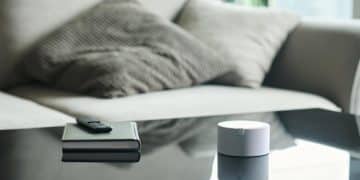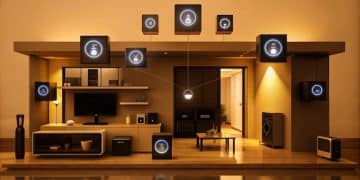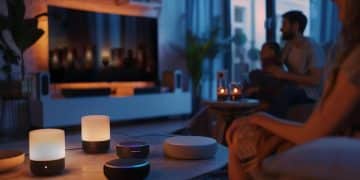Smart Home Hubs: Obsolete in 2 Years? Future Trends & Predictions
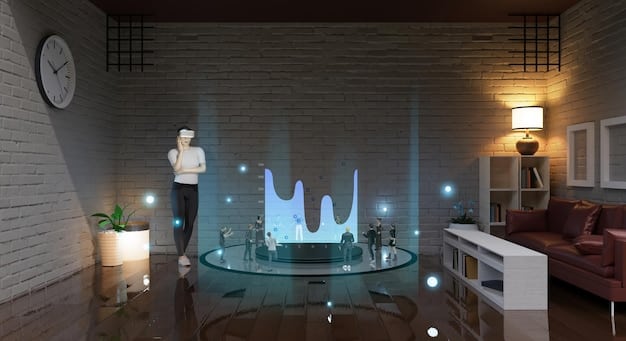
The Future of Smart Home Hubs: Will Centralized Control Systems Become Obsolete in the Next 2 Years? explores the evolving landscape of smart home technology, examining whether traditional hubs like Amazon Echo and Google Home will be replaced by decentralized systems or alternative control methods.
Is the reign of the smart home hub coming to an end? This article explores The Future of Smart Home Hubs: Will Centralized Control Systems Become Obsolete in the Next 2 Years?, examining the forces that could reshape how we interact with our connected homes.
The Shifting Sands of Smart Home Control
The smart home landscape is constantly evolving. What was once considered cutting-edge technology can quickly become outdated as new innovations emerge. One of the biggest questions facing the industry right now is the future of smart home hubs: Are they destined to become obsolete?
Traditional smart home hubs, such as the Amazon Echo and Google Home, have served as central control points for various connected devices. However, several factors are challenging their dominance. Let’s delve into these challenges and explore potential alternative control methods.
The Rise of Decentralized Control
One of the most significant challenges to centralized smart home hubs is the growing trend of decentralized control. This approach distributes control and intelligence across multiple devices rather than relying on a single hub.
With decentralized control, individual smart devices can communicate and coordinate directly with each other, creating a more robust and resilient system. This eliminates the single point of failure risk associated with traditional hubs.
- Enhanced Reliability: Decentralized systems are less susceptible to outages if one device fails.
- Improved Performance: Direct communication between devices reduces latency and lag.
- Greater Flexibility: Decentralized systems can be easily expanded and customized to meet specific needs.
- Simplified Setup: Devices can often be added to the network without complex pairing procedures via a central hub.
The decentralization trend is fueled by advancements in technologies like mesh networking and edge computing, which enable devices to process data and make decisions locally, minimizing reliance on a central hub.
Voice Assistants: Still Relevant or Fading Away?
Voice assistants like Alexa and Google Assistant have been integral to the smart home experience, allowing users to control devices with simple voice commands. However, their role is also being questioned in light of new technologies and evolving user preferences.
While voice control remains popular, some users find it cumbersome or prefer alternative methods like touchscreens, mobile apps, or even automated routines. The rise of privacy concerns surrounding voice data collection further contributes to this shift.

Beyond Voice: Alternative Control Methods
Several alternative control methods are emerging that could potentially displace voice assistants as the primary interface for smart homes. These include:
- Smart Displays: Touchscreen interfaces offer a visual way to control devices, making them ideal for complex tasks or situations where voice control is impractical.
- Mobile Apps: Smartphone apps provide comprehensive control over all connected devices, allowing users to manage their smart home from anywhere with an internet connection.
- Automated Routines: Pre-programmed routines can automate many common tasks, eliminating the need for manual control. For instance, a “Goodnight” routine could automatically turn off the lights, lock the doors, and adjust the thermostat based on user-defined preferences.
- Gesture Control: Emerging technologies like gesture recognition offer a futuristic way to interact with smart home devices without touching them.
The future may involve a hybrid approach, where voice assistants complement other control methods, providing a range of options to suit different user preferences and situations.
The Impact of Matter on Smart Home Interoperability
One of the biggest challenges facing the smart home industry has been the lack of interoperability between devices from different manufacturers. This has created a fragmented ecosystem, making it difficult for consumers to build a truly seamless smart home experience.
Enter Matter, a new open-source connectivity standard designed to address this issue. Matter aims to create a unified platform for smart home devices, allowing them to communicate and work together regardless of their manufacturer.
Matter: A Game Changer?
Matter promises to simplify setup, improve reliability, and enhance security across the smart home ecosystem. By providing a common language for devices to communicate, it could unlock new possibilities for automation and integration.
The adoption of Matter could significantly reduce the need for central hubs, as devices can communicate directly with each other without requiring a single control point. If many devices support Matter, do we still need a central hub?
- Simplified Setup: Matter streamlines the pairing process, making it easier to add new devices to the network.
- Enhanced Interoperability: Devices from different manufacturers can work together seamlessly.
- Improved Security: Matter incorporates robust security features to protect user data and privacy.
Edge Computing: Bringing Intelligence to the Edge
Edge computing involves processing data and making decisions closer to the source, rather than relying solely on the cloud. This approach offers several advantages for smart homes, including reduced latency, improved privacy, and enhanced reliability.
By embedding more processing power in smart devices themselves, edge computing can enable them to perform complex tasks without constant communication with a central hub or cloud server. This opens up new possibilities for advanced automation and personalized experiences.
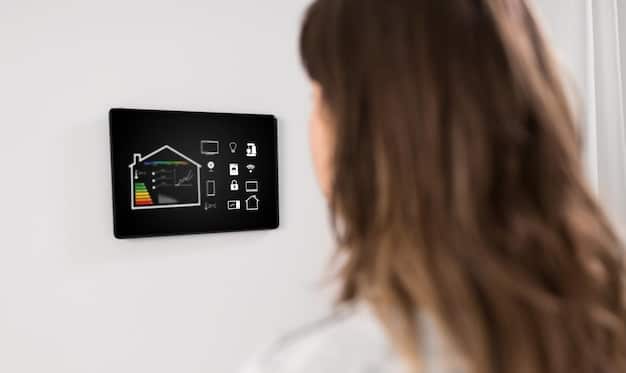
The Benefits of Edge Computing in Smart Homes
Edge computing can empower smart homes to become more responsive, intelligent, and autonomous. For example, a smart security camera could use edge computing to analyze video footage in real-time, identifying potential threats without sending data to the cloud.
The advancements in edge computing are allowing smart devices to do more tasks independently, diminishing their reliance on traditional hubs. This aligns with the trend that points towards hubs getting phased out soon.
- Reduced Latency: Faster response times for voice commands and other interactions.
- Improved Privacy: Sensitive data can be processed locally, reducing the risk of exposure.
- Enhanced Reliability: The system can continue to function even if the internet connection is disrupted.
The Future of the Smart Home: A Hubless World?
While the future of smart home hubs is uncertain, it’s clear that the landscape is changing rapidly. The rise of decentralized control, alternative control methods, Matter, and edge computing are all contributing to a shift away from traditional centralized systems.
It’s possible that we will see a future where smart home devices are more autonomous, intelligent, and interconnected, reducing the need for a single central hub. Or maybe we will see a hybrid approach where hubs will only play a certain role like connecting the devices and all processing will be done at the edge.
Predictions for the Next Two Years
Over the next two years, we can expect to see continued innovation in the smart home space. Here are a few predictions:
- Wider Adoption of Matter: More devices will support the Matter standard, improving interoperability and simplifying setup.
- Increased Use of Edge Computing: More smart devices will incorporate edge computing capabilities enabling them to perform tasks independently.
- Emergence of New Control Methods: Alternative control methods like gesture recognition will become more common but maybe wouldn’t be mainstream.
While it’s unlikely that smart home hubs will completely disappear in the next two years, but they are definitely on their way out as all the processing and decision making will soon be shifted to the edge.
The Role of AI and Machine Learning
Artificial intelligence (AI) and machine learning (ML) are poised to play an increasingly important role in the future of smart homes. These technologies can enable smart devices to learn from user behavior, adapt to changing conditions, and provide personalized experiences.
AI-powered smart homes can anticipate user needs, automate tasks, and optimize energy consumption. For example, an AI-powered thermostat could learn a user’s preferred temperature settings and automatically adjust the thermostat accordingly, optimizing comfort while minimizing energy waste.
AI would enable all devices in the smart home to work as one system diminishing the need for traditional centralized control.
- Personalized Experiences: AI can tailor the smart home experience to individual user preferences.
- Predictive Maintenance: AI can identify potential problems before they occur, preventing costly repairs.
- Energy Optimization: AI can optimize energy consumption, reducing utility bills and environmental impact.
| Key Point | Brief Description |
|---|---|
| 💡Decentralized Control | Shifting control to individual devices reduces hub reliance. |
| 🌐 Matter Protocol | Enhances device interoperability, diminishing hub necessity. |
| 🤖 Edge Computing | Local data processing reduces latency and reliance on hubs. |
| 🗣️ Voice Assistants | Evolving into complementary tools alongside other control methods. |
Frequently Asked Questions
▼
It’s unlikely they will disappear entirely, but expect a significant reduction in their central role as decentralized technologies advance and interconnected devices improve.
▼
Matter is a new standard for interoperability, enabling seamless communication between devices from different manufacturers, which will reduce the dependency on a central hub for connectivity.
▼
Edge computing allows devices to process data locally, reducing the need to send information to a central hub or cloud, thereby decreasing the importance of hubs.
▼
Yes, voice assistants can evolve into complementary tools that work alongside other control methods like apps and touchscreens, enhancing the overall user experience.
▼
Alternative control methods are touchscreens, mobile apps, automated routines, gesture recognition, and AI, all contributing to a more flexible and decentralized control of Smart Home devices.
Conclusion
The future of smart home hubs appears to be one of transition. While they may not disappear entirely in the next two years, their role as central control points is likely to diminish as decentralized technologies become more prevalent. The rise of Matter, edge computing, and alternative control methods, combined with the increasing intelligence of smart devices, suggests a future where homes are more autonomous, interconnected, and personalized.

